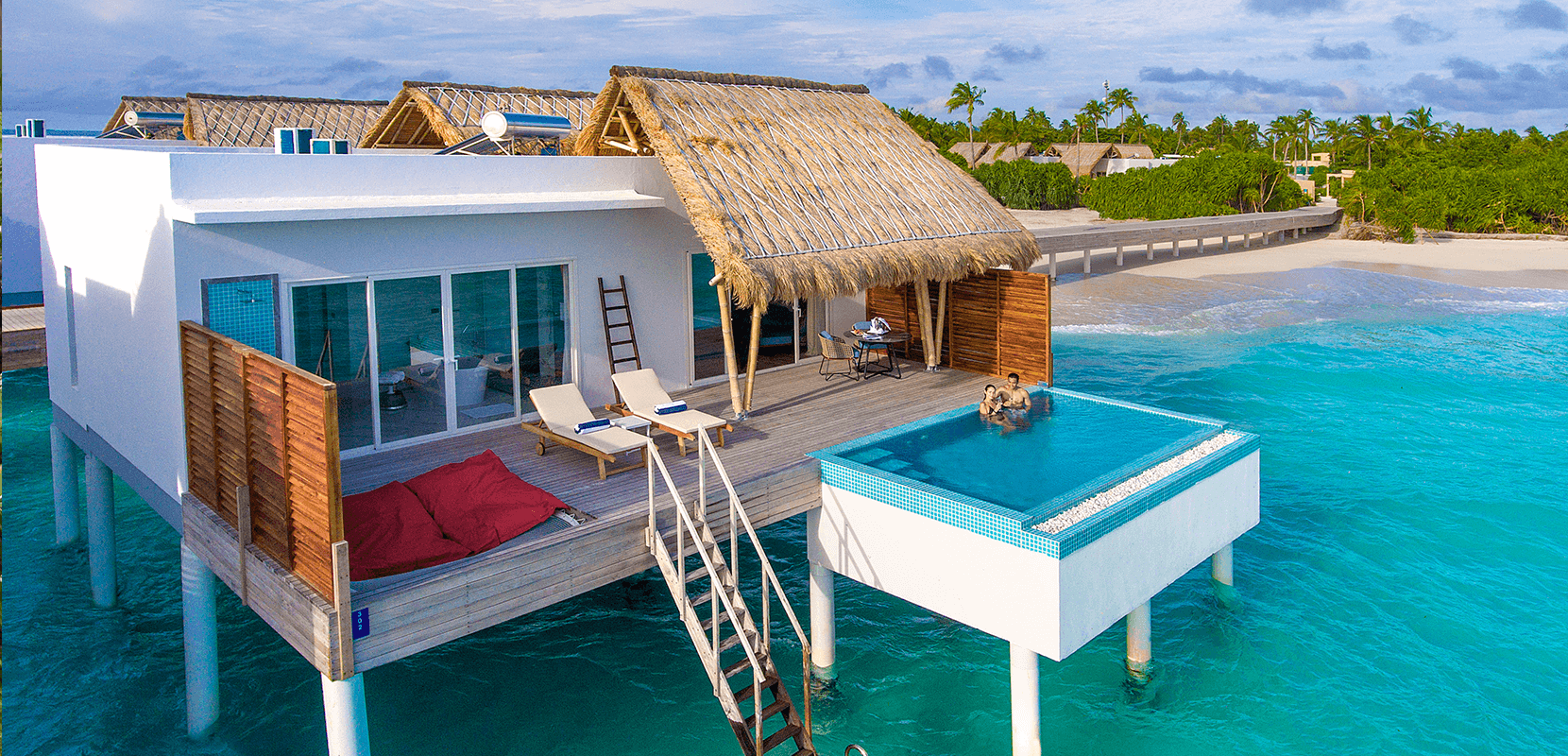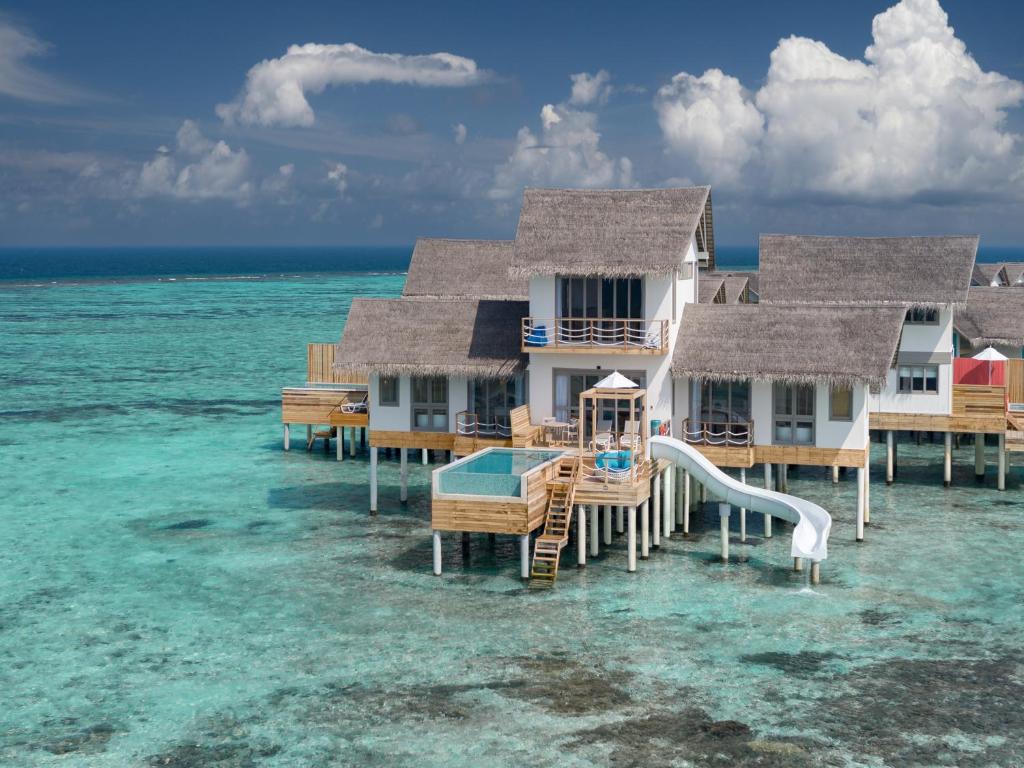Stereotypes about exorbitant costs are gradually giving way to cold calculation. Holiday prices in the Maldives are not abstract luxuries, but specific categories of spending that can be flexibly adjusted. Cost formation depends on the season, type of accommodation, length of stay and travel patterns between islands.
The all-inclusive format is fading into the background. More and more tourists refuse intermediaries and build a budget itinerary on their own. Choosing a destination requires analysing the costs of individual blocks, comparing island types, and assessing seasonal variations. Each figure is a justification, each item of expenditure is an element of the equation.
Airfare prices: a starting point for calculating a holiday in the Maldives
Flight costs are the first major budget item. Direct flights from Moscow, Dubai and Istanbul have formed a steady grid. The average price for 2025 is from 450 to 750 USD round trip for early bookings (60-90 days in advance). Periods of peak demand (December-January) increase the price to 950-1100 USD.
A budget flight via Doha, Colombo or Abu Dhabi with a layover can reduce costs to 400-500 USD. Azur Air, Qatar Airways, Turkish Airlines offer seasonal discounts. Holiday prices in the Maldives start to form at the stage of buying tickets – a competent choice of dates saves up to 30% of the total capital.
Accommodation: from hut to villa
 Maldivian hotels are divided into private resorts and localised guesthouses. The resort island provides maximum comfort, but requires investment – from 350 USD per day for a standard room. Villas over water cost from 600 USD, with Jacuzzi – from 800 USD. Prices for hotels on local islands start from 35 USD per night with breakfast. Rooms are equipped with air conditioning, Wi-Fi, shower. The best value is offered by the islands of Toddu, Mafushi, Gan. Direct booking through Booking gives an additional discount of up to 15%. 10 days in a guesthouse cost 350-450 USD, which is comparable to the costs in South-East Asia. For longer stays, concessions reach 20-30%.
Maldivian hotels are divided into private resorts and localised guesthouses. The resort island provides maximum comfort, but requires investment – from 350 USD per day for a standard room. Villas over water cost from 600 USD, with Jacuzzi – from 800 USD. Prices for hotels on local islands start from 35 USD per night with breakfast. Rooms are equipped with air conditioning, Wi-Fi, shower. The best value is offered by the islands of Toddu, Mafushi, Gan. Direct booking through Booking gives an additional discount of up to 15%. 10 days in a guesthouse cost 350-450 USD, which is comparable to the costs in South-East Asia. For longer stays, concessions reach 20-30%.
Food and logistics: the hidden costs of a holiday in the Maldives
Hotel restaurants are often overpriced. Lunch at a guesthouse is 7-12 USD, seafood dinner 15-20 USD. On local islands, tuna, rice and flatbread dishes sell for 3-5 USD. Street food is not available. Transfers fall into three categories: public ferry (1-3 USD), speedboat (25-50 USD), seaplane (200-400 USD). The trip from the airport to the local island takes 1.5-2 hours, available daily. A budget holiday in the Maldives requires precise travel planning. One mistake with the transfer schedule increases the spending per day of stay.
How to save money in the Maldives: a systematic method to reduce holiday prices
Pricing is controllable. The right itinerary, reasonable dates, early bookings allow you to organise holiday in Maldives prices without unnecessary overpayments. How to save money:
-
Book tickets 60+ days in advance – savings of up to 35%.

-
Choose local islands – accommodation from 35 USD.
-
Comparing transfers – saving on speed.
-
Eat at local cafes – reduce daily expenses.
-
Plan for the off-season – catch discounts.

-
Take a minimum of luggage – reduce your flight costs.
-
Refuse all-inclusive packages – pay only for what you need.
Beaches and islands: the geography of privacy and cost differences
Beach holidays in the archipelago are accompanied by a unique geography. Each island is a separate world with its own rules, service and price category. The price of a holiday in the Maldives is formed, first of all, by the choice of location and type of beach. Resort islands, where only hotels are located, offer ideal lines with white sand, shady palm trees, infrastructure “without excessive noise”. Such places as Rangali, Meedhu, Nalaguraidu keep the bar at 450-1200 USD per day. For this money a tourist gets privacy, luxury service and limited access of outsiders.
On local islands beaches are not inferior in quality. Allowed bathing areas are marked specifically for tourists. An example is Maafushi, where the equipped tourist beach is separated from the local residential sector. Cleanliness is maintained daily, sunbed rental from 3 USD. Entrance is always free. Islands with different densities of construction determine the difference in perception: somewhere you feel the solitude, somewhere – the rhythm of life of the local community. If you want to enjoy complete silence, it is more logical to choose less popular atolls like Vaavu or Laviyani.
Cheap tours to Maldives
Tour operators offer cheap tours to Maldives based on budget gesthouses and local transfers. The cost – from 950 to 1200 USD per person for 7 nights with flight, breakfasts and insurance. Such packages include accommodation on localised islands and self-guided tours. The model only works if the itinerary is strictly followed, no force majeure and limited luggage. Tourists choosing these options should consider the tight boat timings and lack of insurance against weather disruptions. The advantage of the tours is that they save planning time. The disadvantage is the lack of flexibility. If you need to change the island, extend your holiday or add a service, you have to overpay.
Maldives holidays on your own: price management under control
Tourists are increasingly rejecting intermediaries, choosing direct booking, flying low-cost carriers, eating in cafes and travelling by ferry. This approach saves up to 40% of the budget compared to the classic variant. Example: a 10-day trip with accommodation in a gesthouse (350 USD), meals (150 USD), excursions (150 USD), flights (550 USD), transfers (50 USD) – total 1250 USD.
Pros: budget control, variability, flexibility in itinerary. Minuses: need to book independently, keep track of schedules, no guarantees against delays. Budget holidays in the Maldives are possible only with independent organisation, attention to details and studying the specifics of the islands.
Conclusion
 Maldives holiday prices in 2025 are manageable. With proper planning, the destination provides one of the best formulas: “experiences = investment in yourself”. Beaches with turquoise water, nights under the stars, breakfast on the sand, evenings on a boat – every day brings something that is hard to express in money. The Maldives remains one of the few places where holidays make sense beyond the budget.
Maldives holiday prices in 2025 are manageable. With proper planning, the destination provides one of the best formulas: “experiences = investment in yourself”. Beaches with turquoise water, nights under the stars, breakfast on the sand, evenings on a boat – every day brings something that is hard to express in money. The Maldives remains one of the few places where holidays make sense beyond the budget.
 en
en  ar
ar  de
de  es
es  fr
fr  nl
nl  hi
hi  it
it  pt
pt  el
el 



